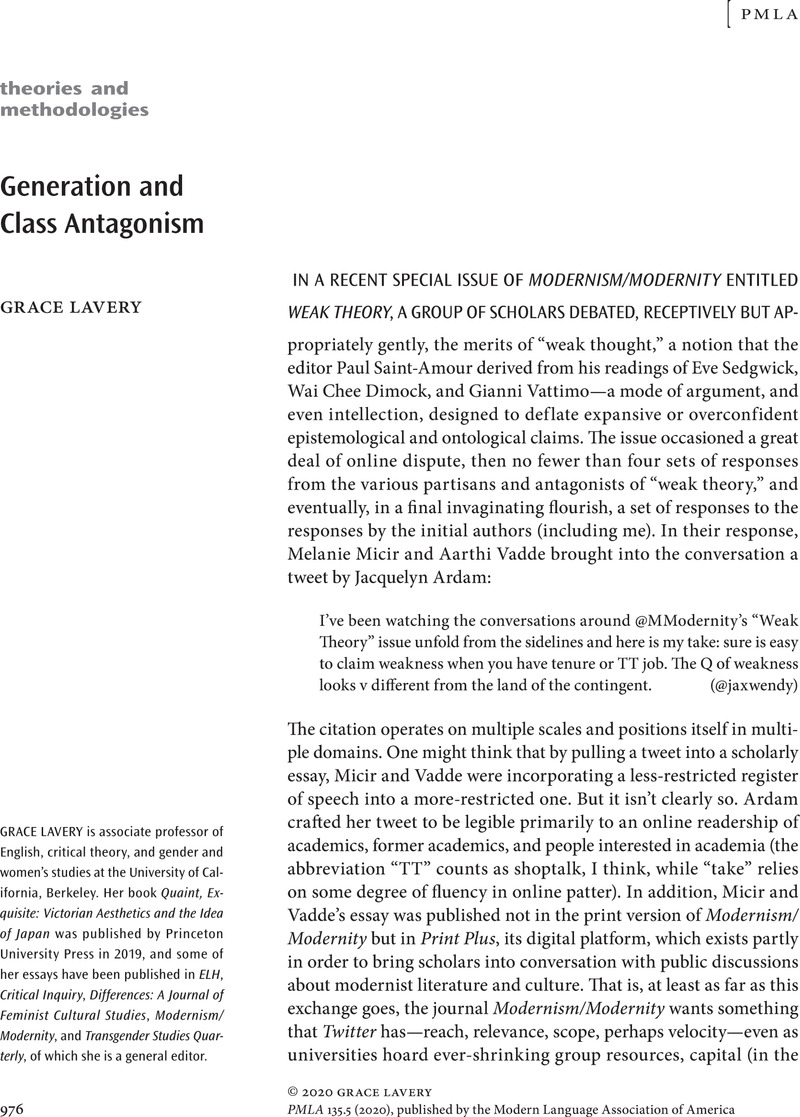No CrossRef data available.
Article contents
Generation and Class Antagonism
Published online by Cambridge University Press: 18 January 2021
Abstract
An abstract is not available for this content so a preview has been provided. Please use the Get access link above for information on how to access this content.

- Type
- Theories and Methodologies
- Information
- Copyright
- Copyright © 2020 Grace Lavery
References
Works Cited
Bersani, Leo. “Is the Rectum a Grave?” October. vol. 43, Winter 1987, pp. 197–222.CrossRefGoogle Scholar
Dabashi, Pardis. “The Pressure to Intervene: A Case for the Modest (Young) Critic.” Post-critique and the Profession. MLA Annual Convention, 4 Jan. 2019, Hyatt Regency, Chicago. Typescript.Google Scholar
@jaxwendy (Jacquelyn Ardam). “I've been watching the conversations around @MModernity's ‘Weak Theory’ issue unfold from the sidelines and here is my take: sure is easy to claim weakness when you have tenure or TT job. The Q of weakness looks v different from the land of the contingent.” Twitter, 21 May 2019, 4:46 p.m., twitter.com/jaxwendy/status/1130937926156738562.Google Scholar
McDermott, John. “Those People We Tried to Cancel? They're All Hanging Out Together.” The New York Times, 2 Nov. 2019, www.nytimes.com/2019/11/02/style/what-is-cancel-culture.html.Google Scholar
Micir, Melanie, and Vadde, Aarthi. “Responses to the Responses to the Special Issue on Weak Theory.” Modernism/Modernity, 15 Aug. 2019, modernismmodernity.org/forums/posts/responses-responses-special-issue-weak-theory.Google Scholar




